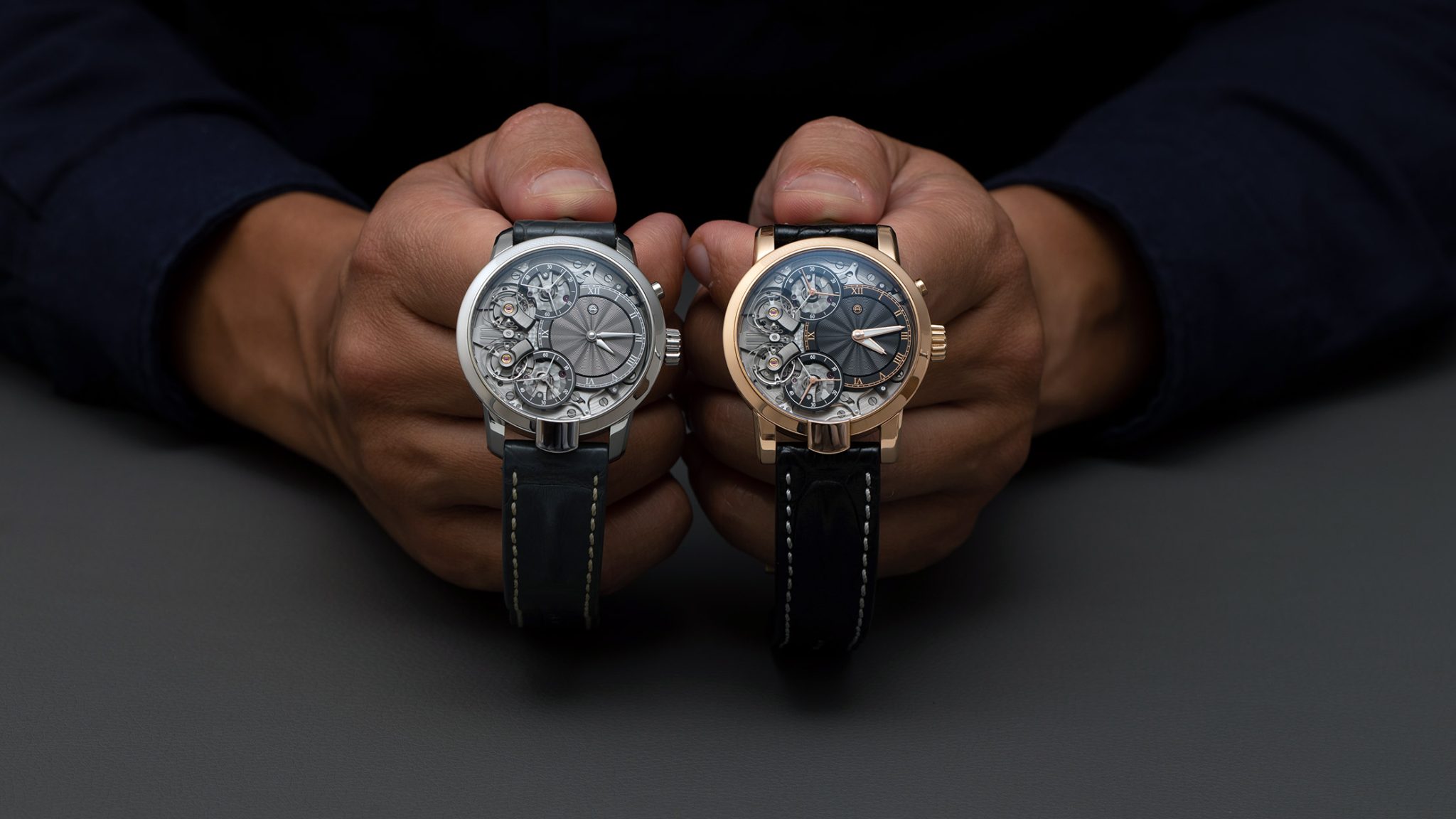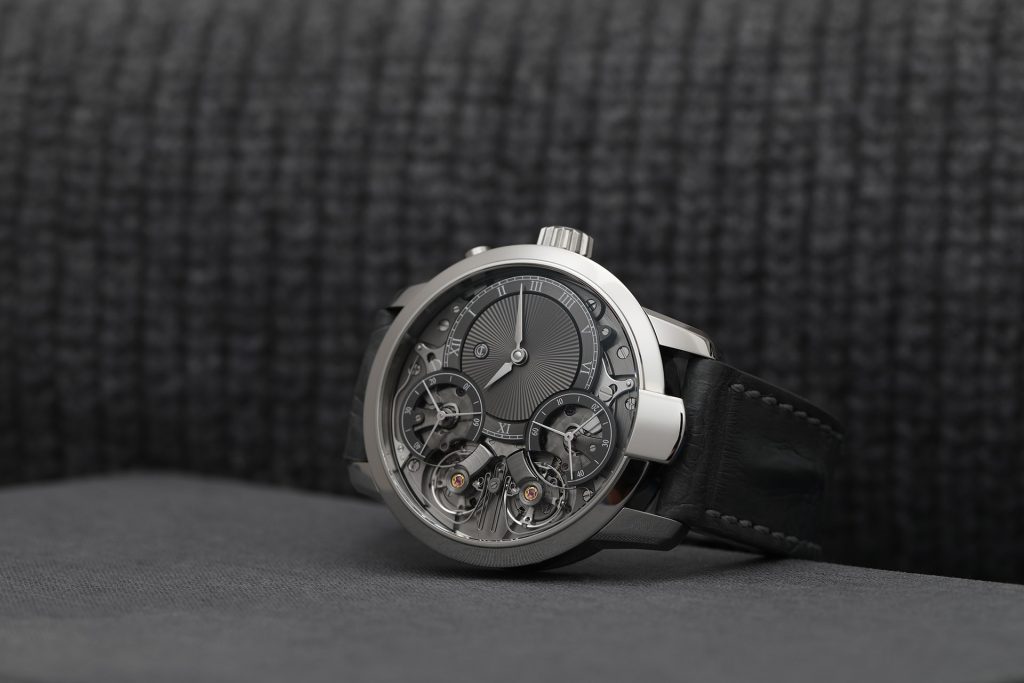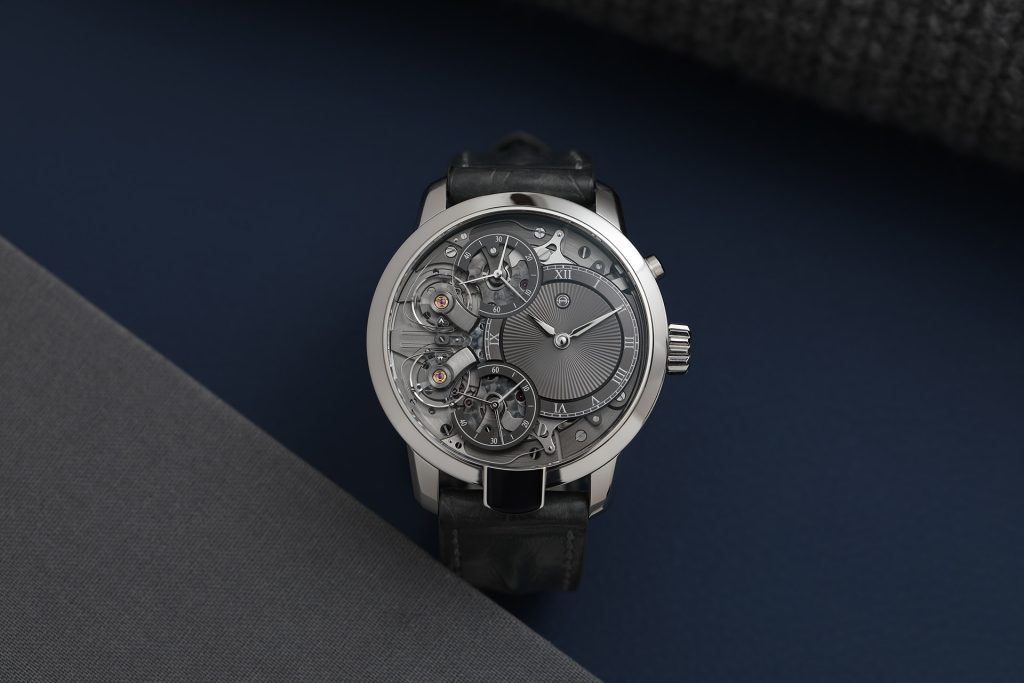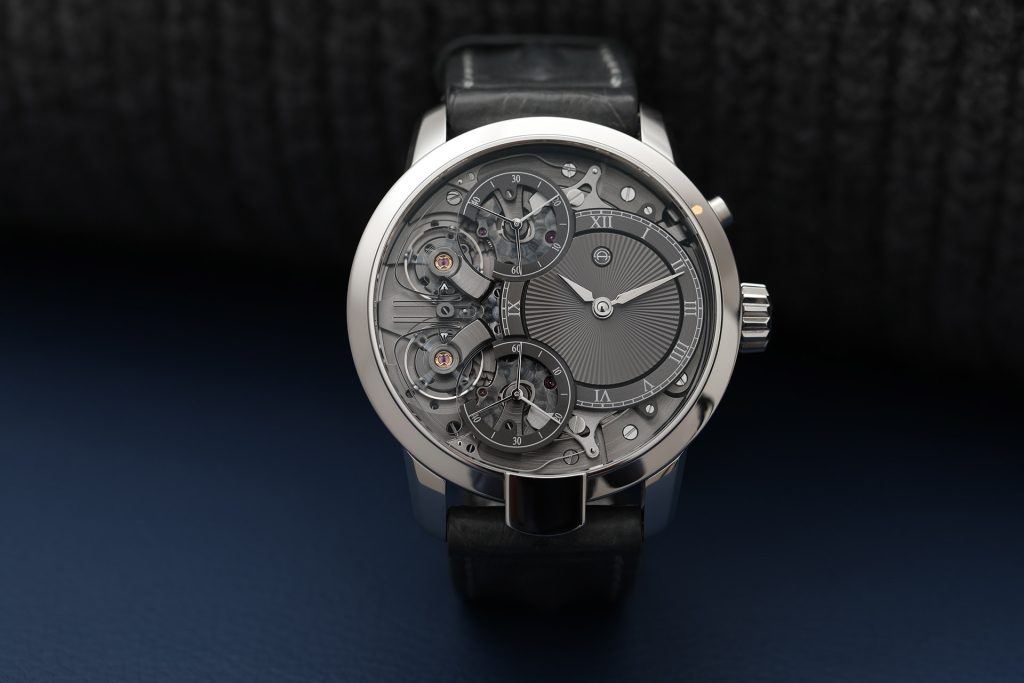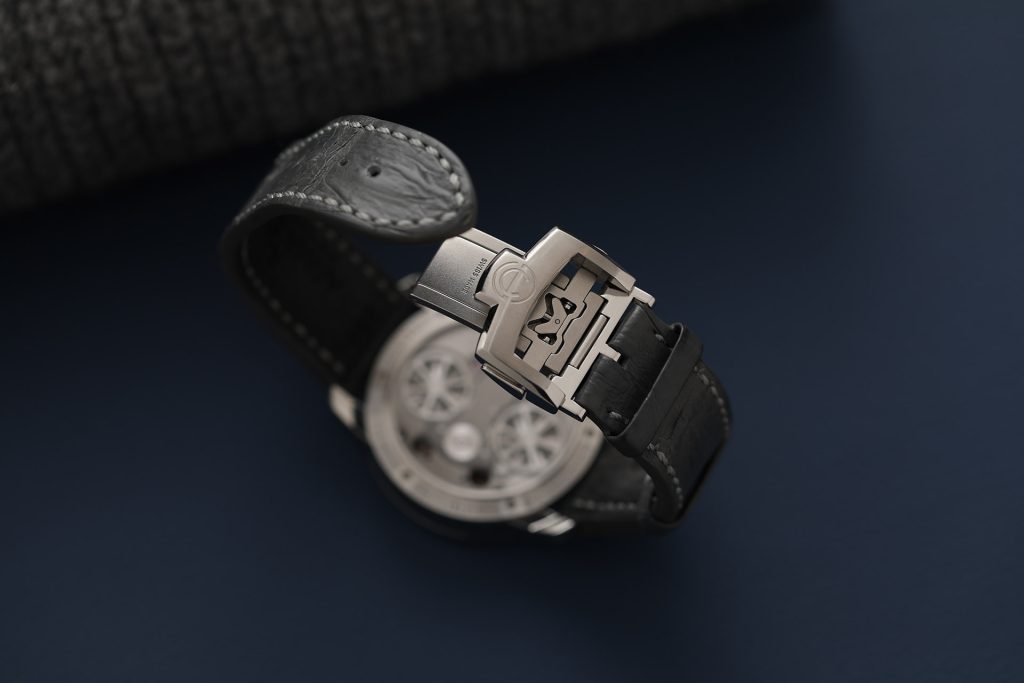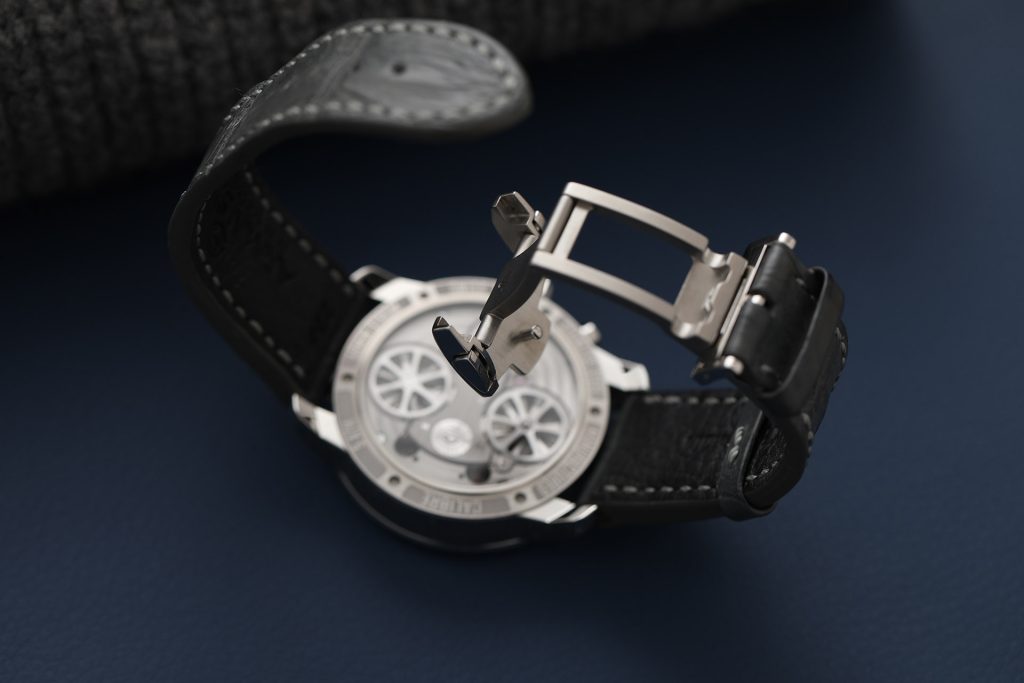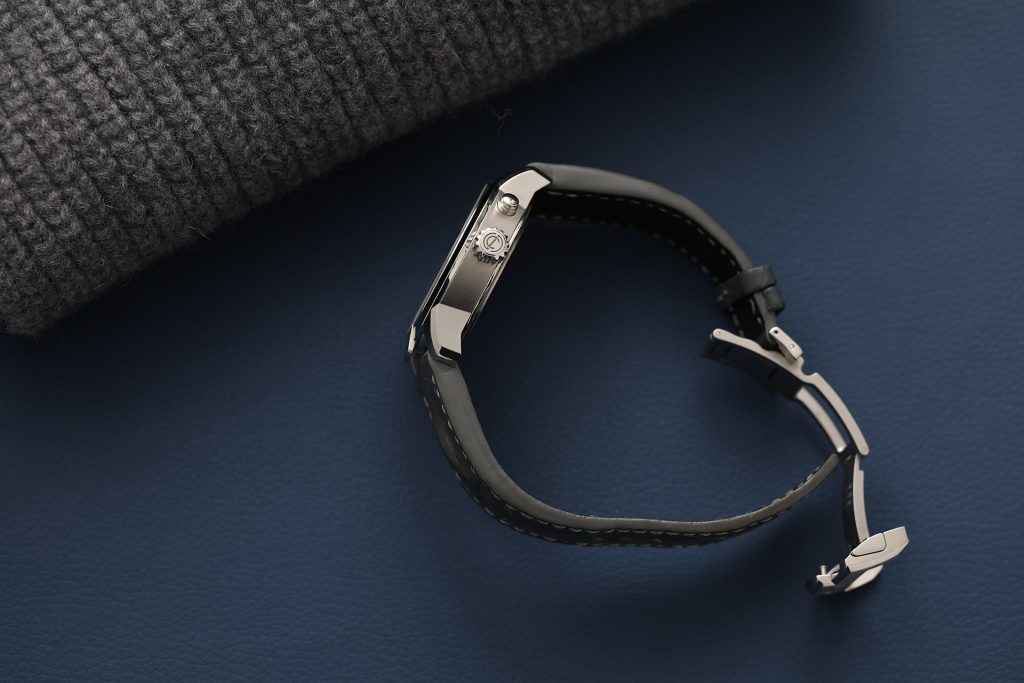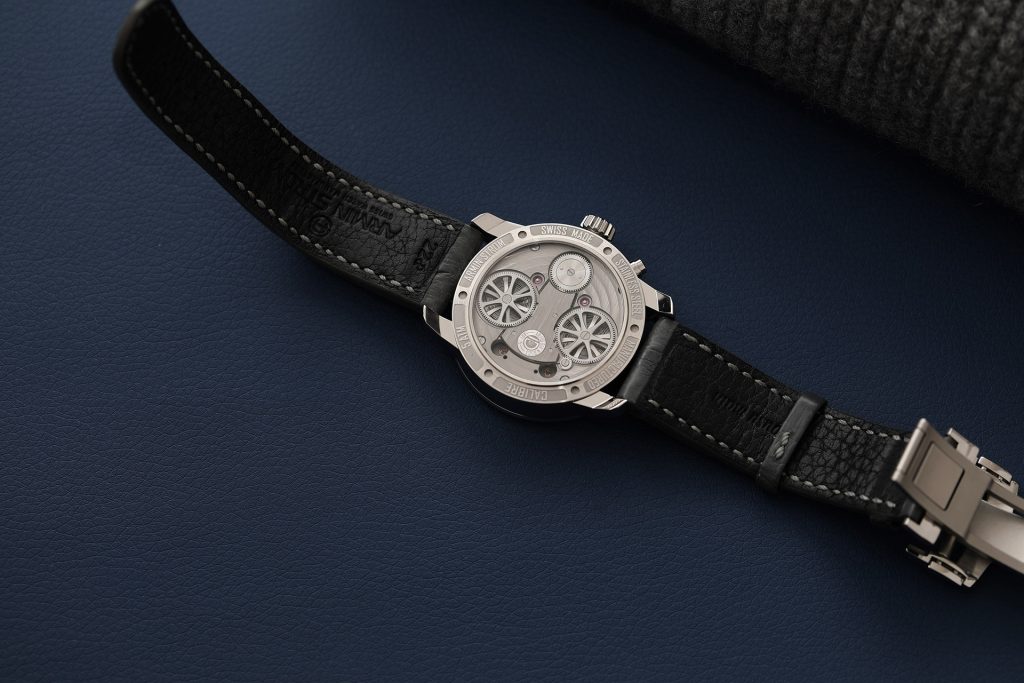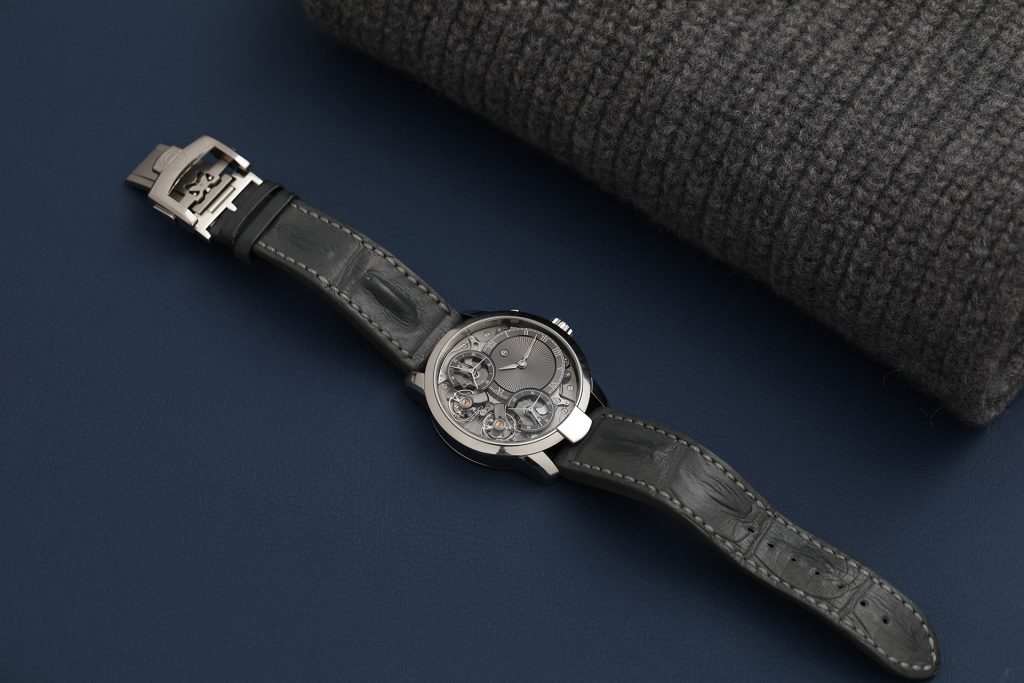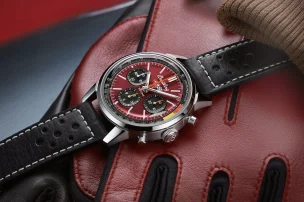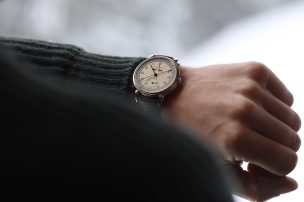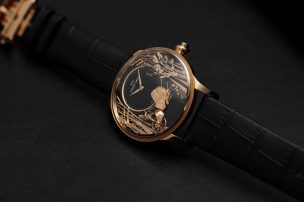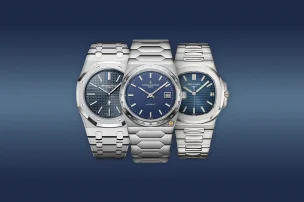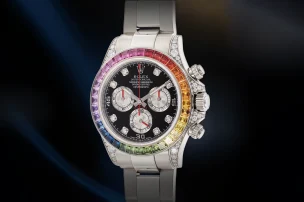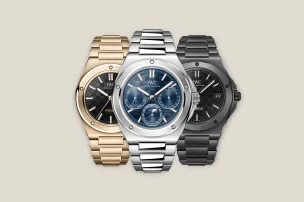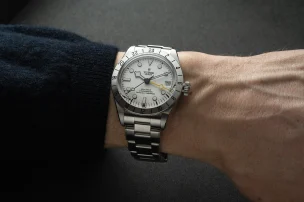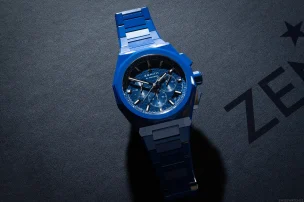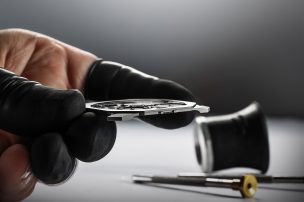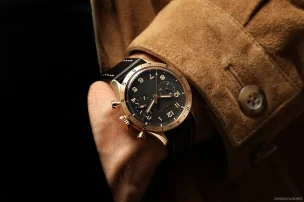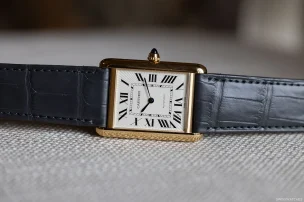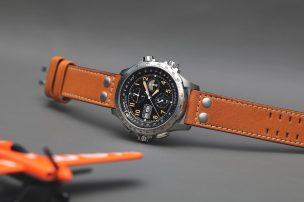
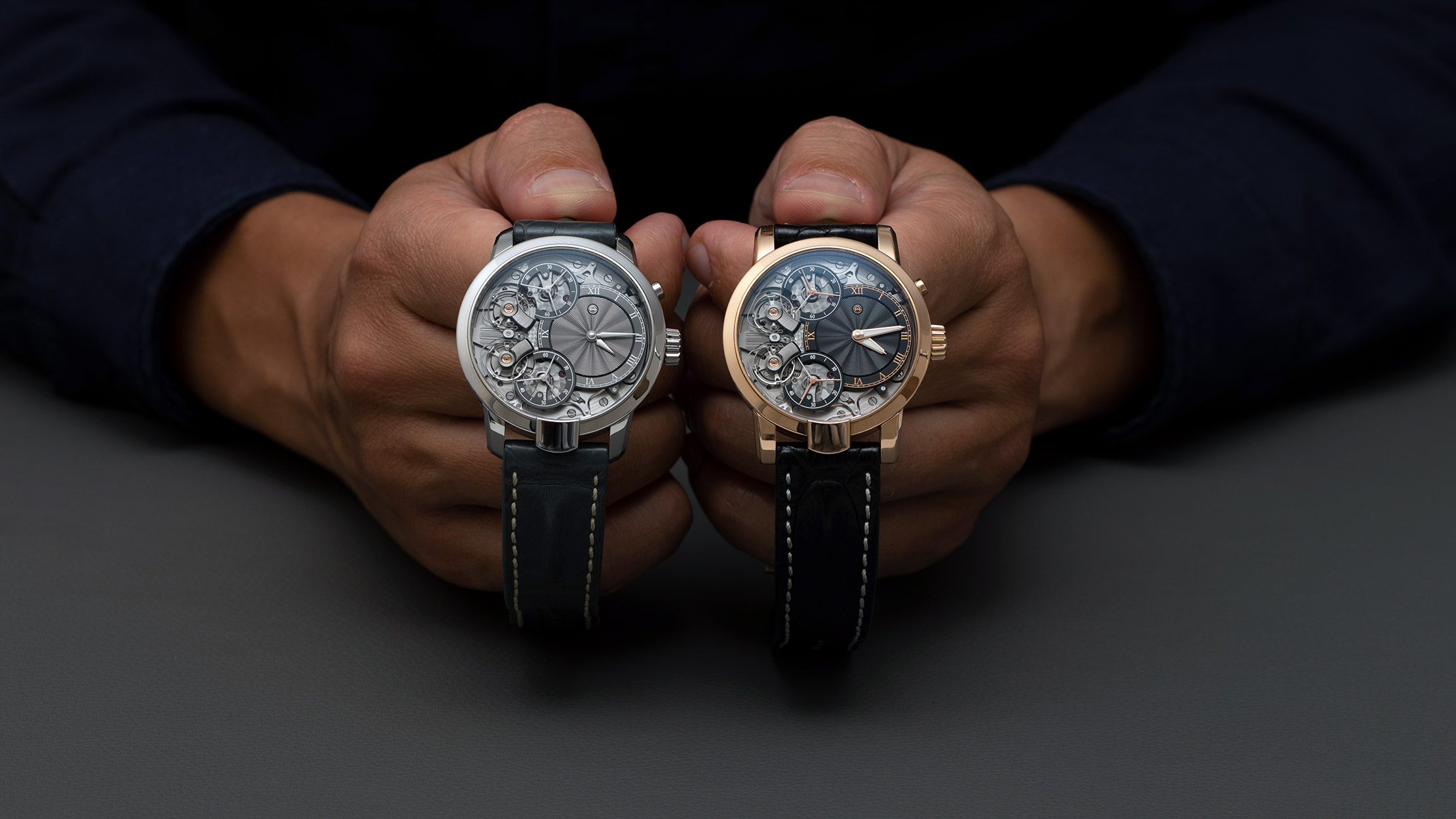
The Pursuit of Harmony: Armin Strom Mirrored Force Resonance Guilloché Dial
A well-trained opera singer is able to cause a tuning fork to vibrate simply by the power of their voice. The tuning fork absorbs the energy, and strives to vibrate at the same frequency. Should the tuning fork be interrupted by an external factor, it always tries to get back in line with its counterpart. This is called resonance.
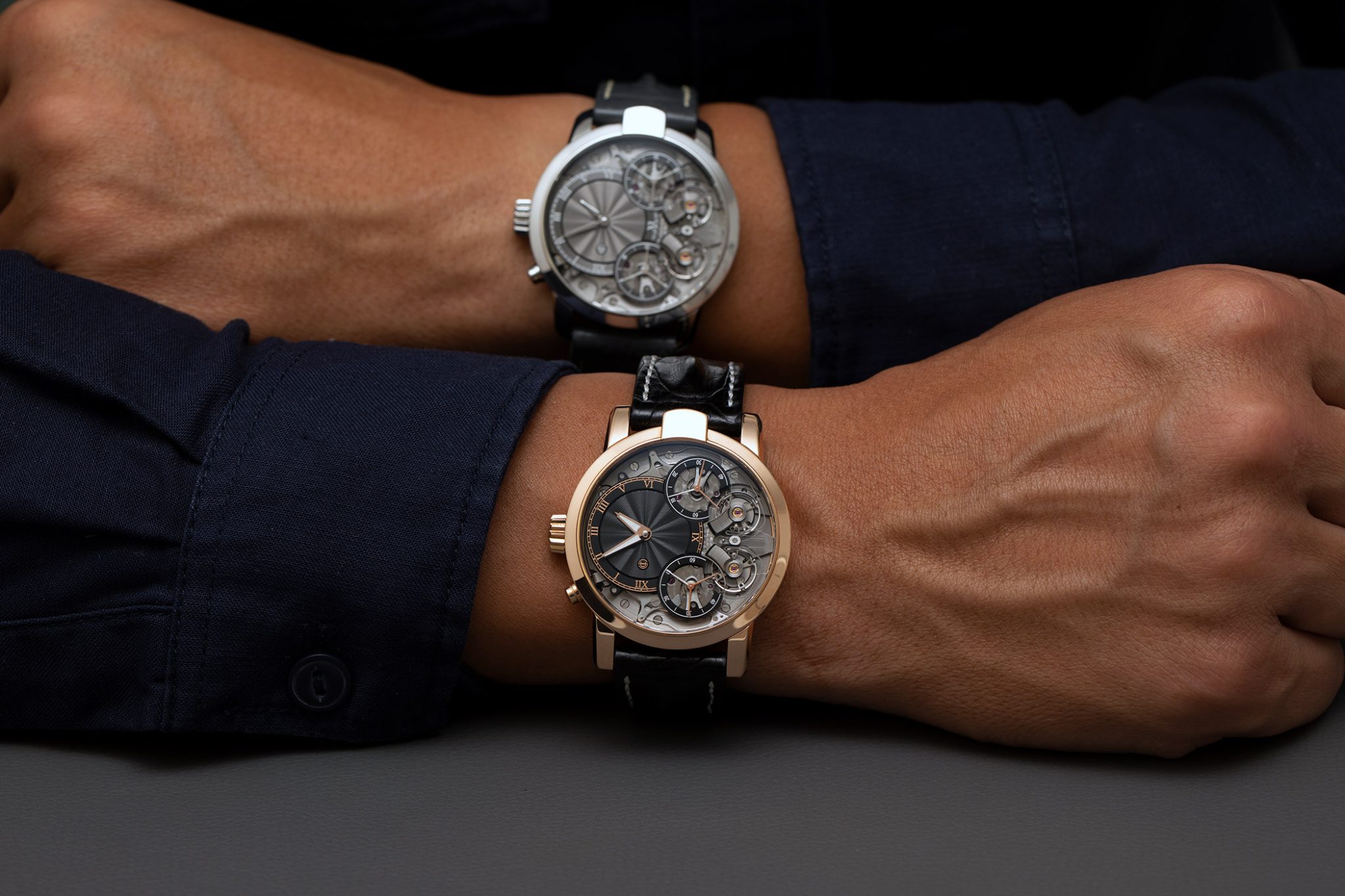
In the 17th century, Christiaan Huygens, inventor of the pendulum clock, discovered that this phenomenon could also have a positive effect in the watchmaking industry. Nevertheless, in the years that followed, there were few watchmakers able to successfully implement this physical phenomenon in their watches.
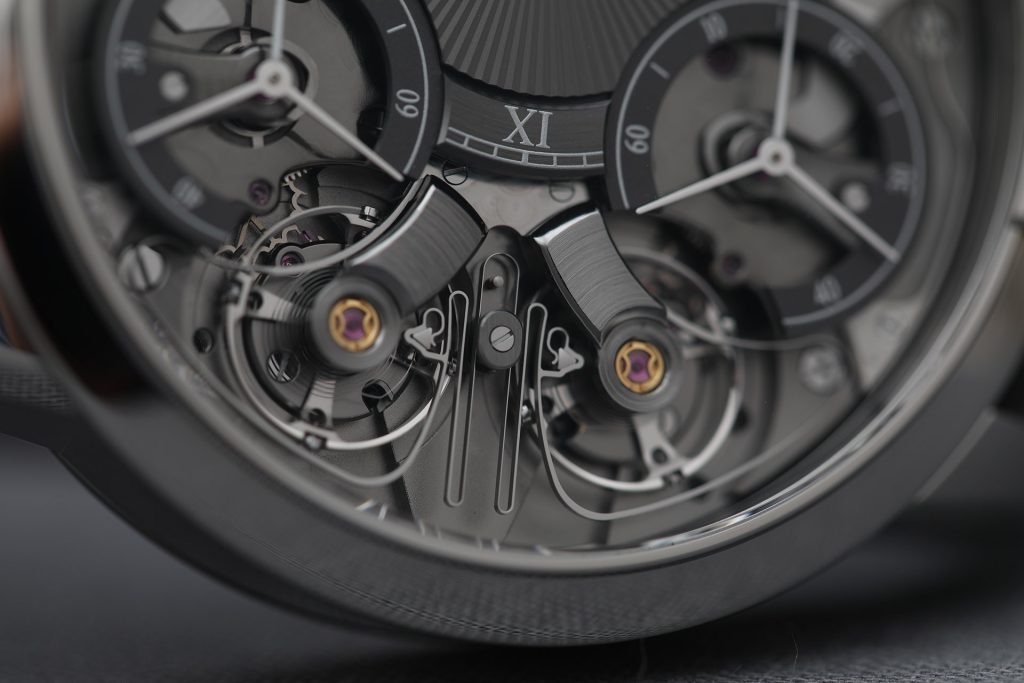
Resonance in a watch – two connected balances
For oscillators to be able to synchronise with each other, they have to be closely tuned. Ideally, they will be identical. One can compare it with a toddler, trying to synchronise steps with an adult, who will inevitably only manage to last a few attempts.
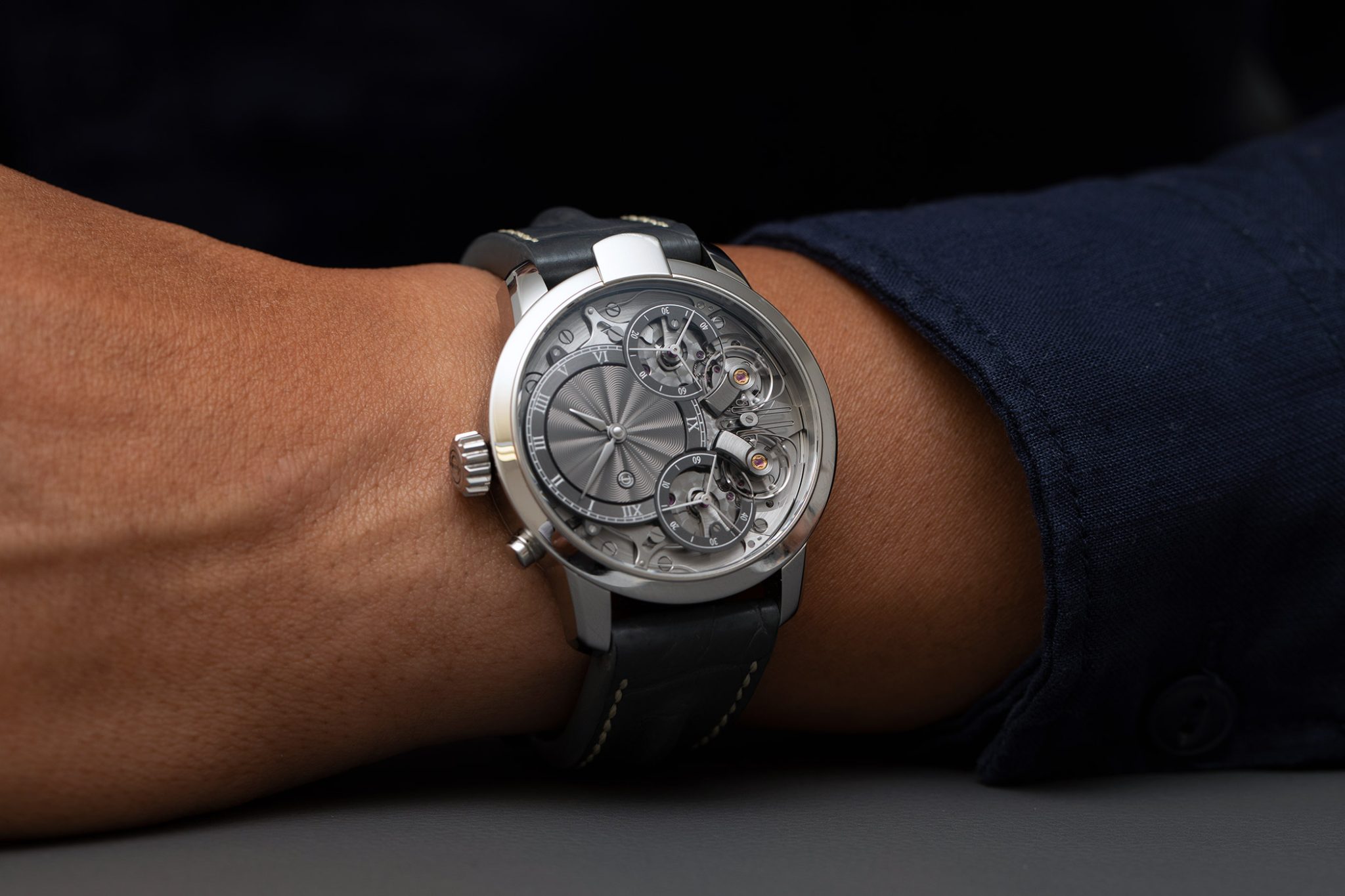
Armin Strom Mirrored Force Resonance Guilloché Dial – Steel
However, two oscillators do not necessarily have to be connected to each other. The opera singer can get the tuning fork vibrating simply through the frequencies travelling by air. But Christiaan Huygens discovered the crucial advantage of two connected oscillators, when his pendulums were attached to a common beam and the momentum of the one pendulum put the other one into motion. The pivotal energy source was the beam, which transferred the vibrations from one to another. It becomes noticeable that the pendulums oscillate synchronically – but mostly in opposite direction to each other.
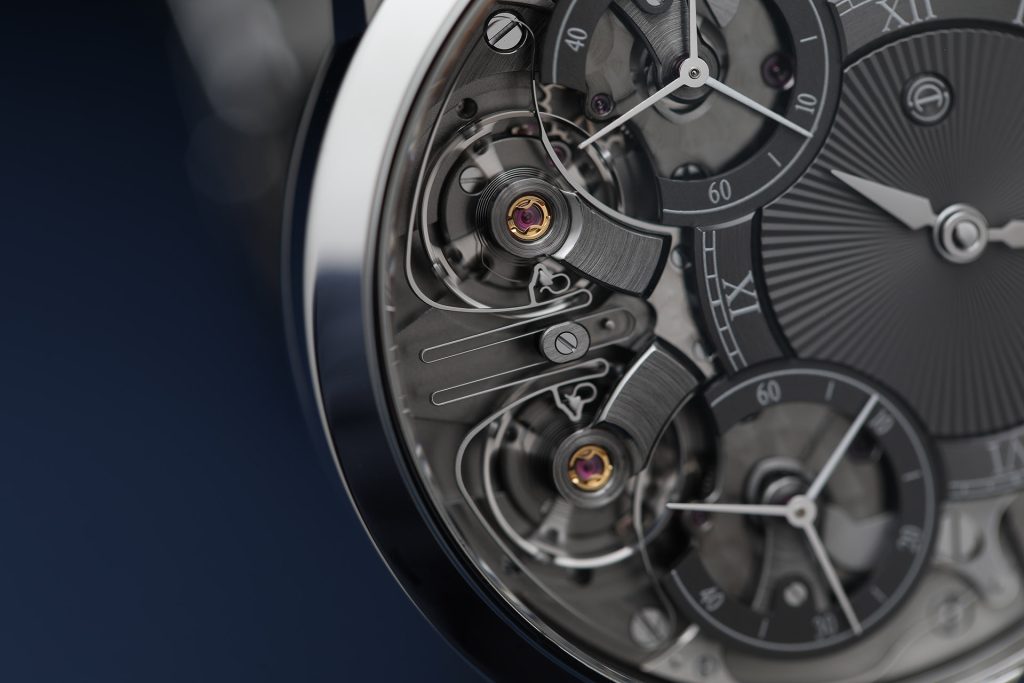
Mirrored Force Resonance
In 2016, Armin Strom first introduced and patented the Mirrored Force Resonance with two balances that are connected with a tiny clasp, which transfers the vibrations. It is truly spectacular to observe in action.
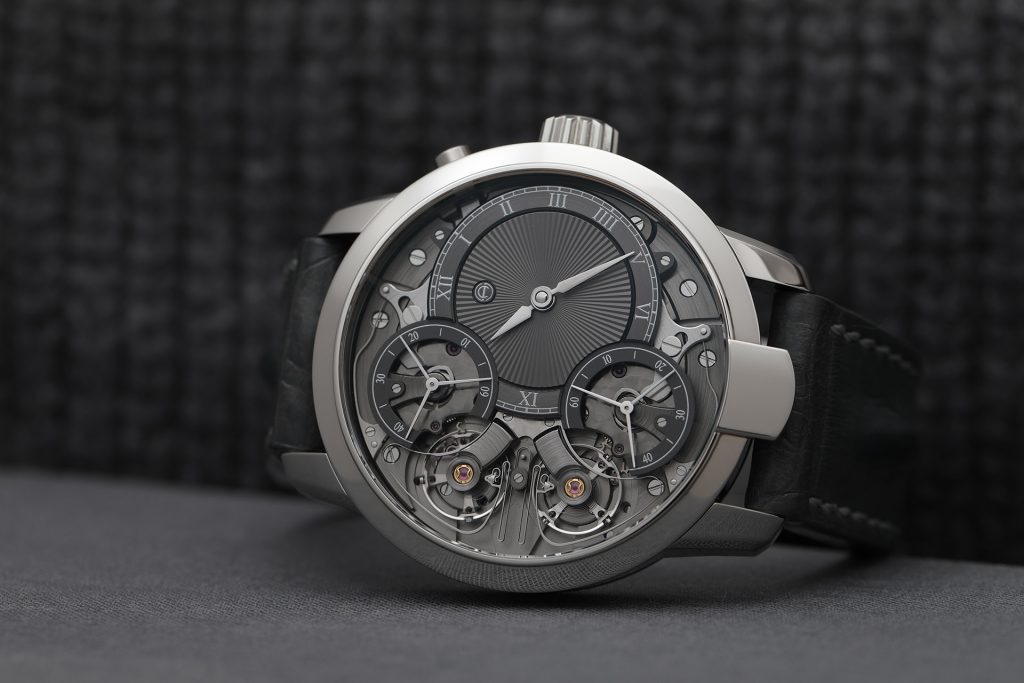
When we first saw the watch, we couldn’t stop looking at the pulsing heart of the timepiece, which also offers an exciting open view. The spectacle is not only appealing to see, but also has a positive technical impact on the power reserve. When Christiaan Huygens first discovered the phenomenon, he became sceptical about any deviation of the pendulum influenced by another power source. However: they run in sync.
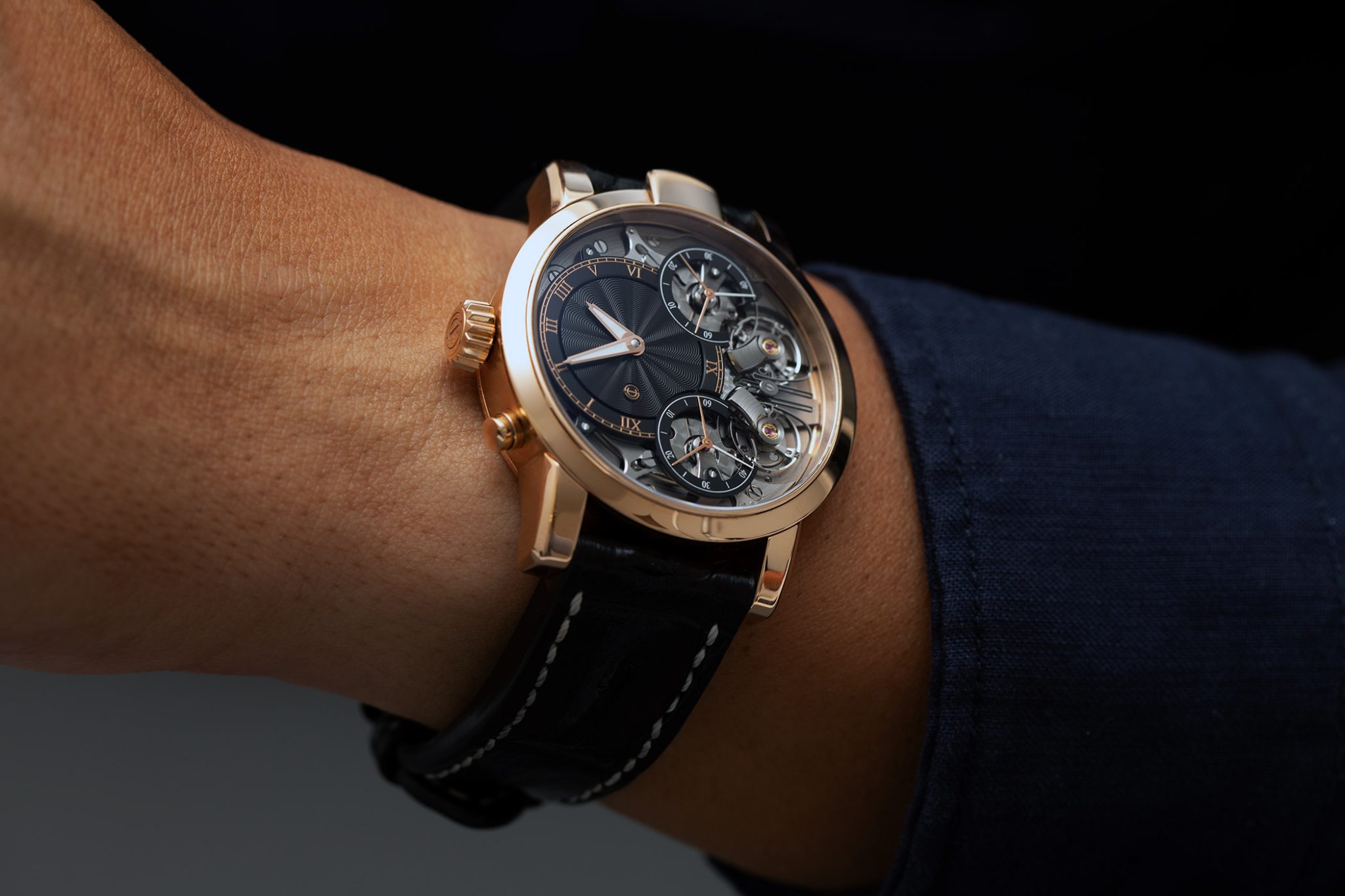
Armin Strom Mirrored Force Resonance Guilloché Dial – Roségold
They even conserve energy by saving each other’s power. Furthermore, the Resonance mechanism contributes to better absorbing of external impacts. Any external impulse will cause one balance to slow down and the other one to temporarily speed up, before they slowly start to find the way back to their rhythm.
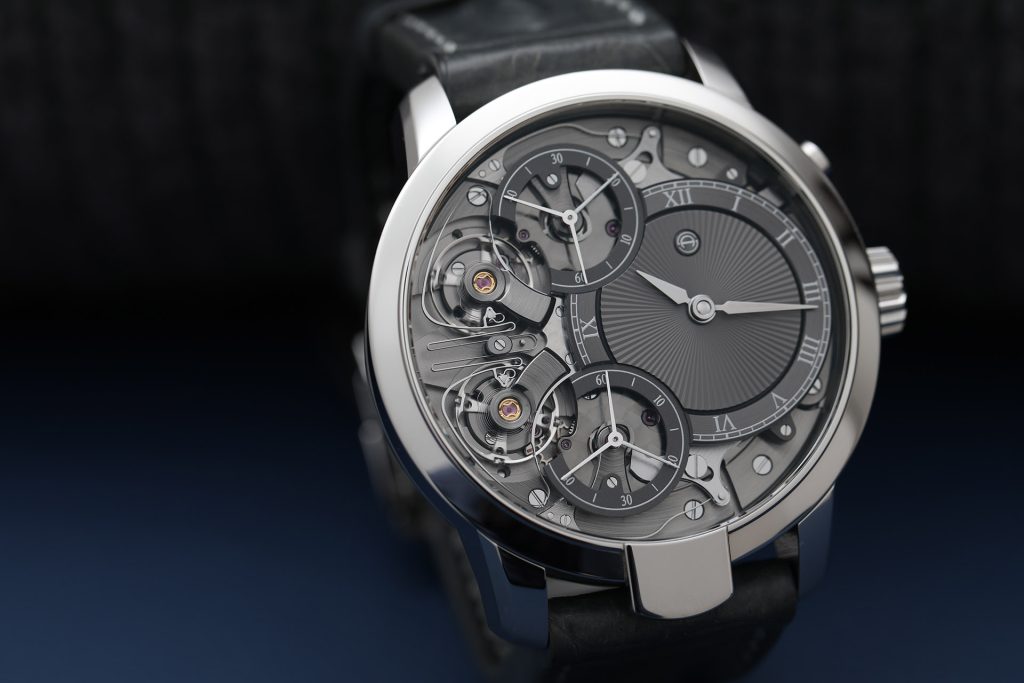
Armin Strom produces the mechanism for its Mirrored Force Resonance entirely in-house. In fact, ever since 2009, the brand has worked on creating movements in-house at its small manufacture in Biel. The manufacture is capable of producing nearly all components independently. The 2017 version of the Mirrored Force Resonance Guilloché Dial (available in steel or rose gold) are equipped with the ARF15 hand-wound movement and two independent, symmetrically mirrored regulators.
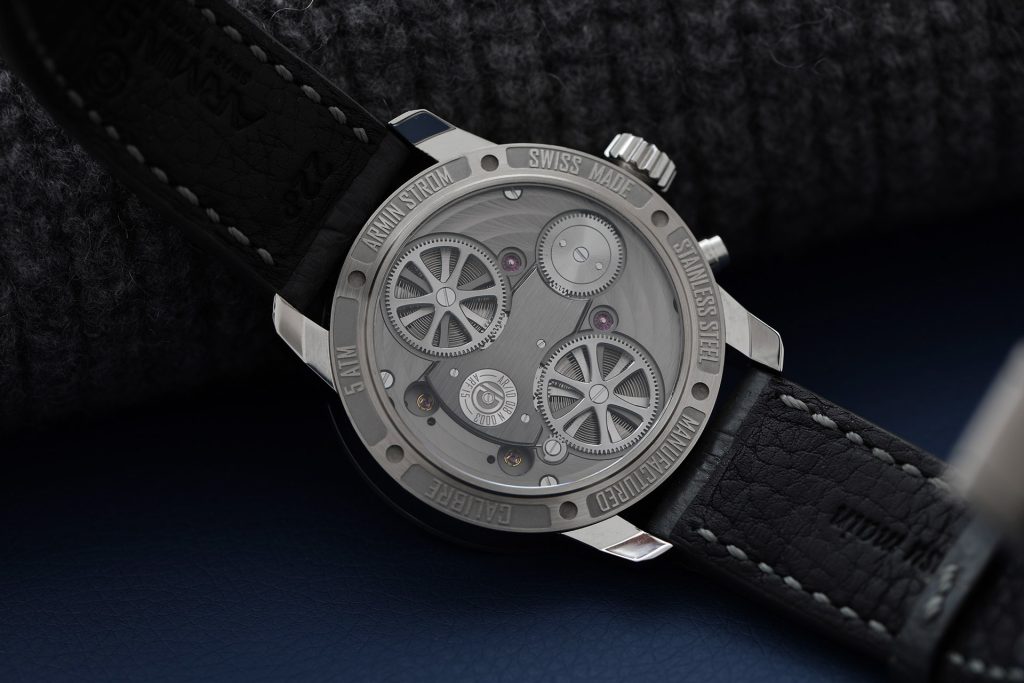
The hand-wound movement ARF15 with two symmetrically mirrored regulators
Armin Strom first presented it in 2017 with a guilloche dial crafted by hand. The man responsible for this new dial design was none other than Kari Voutilainen, a Finnish rock star among independent watchmakers, who is known to be a master of finishing cases and dials.
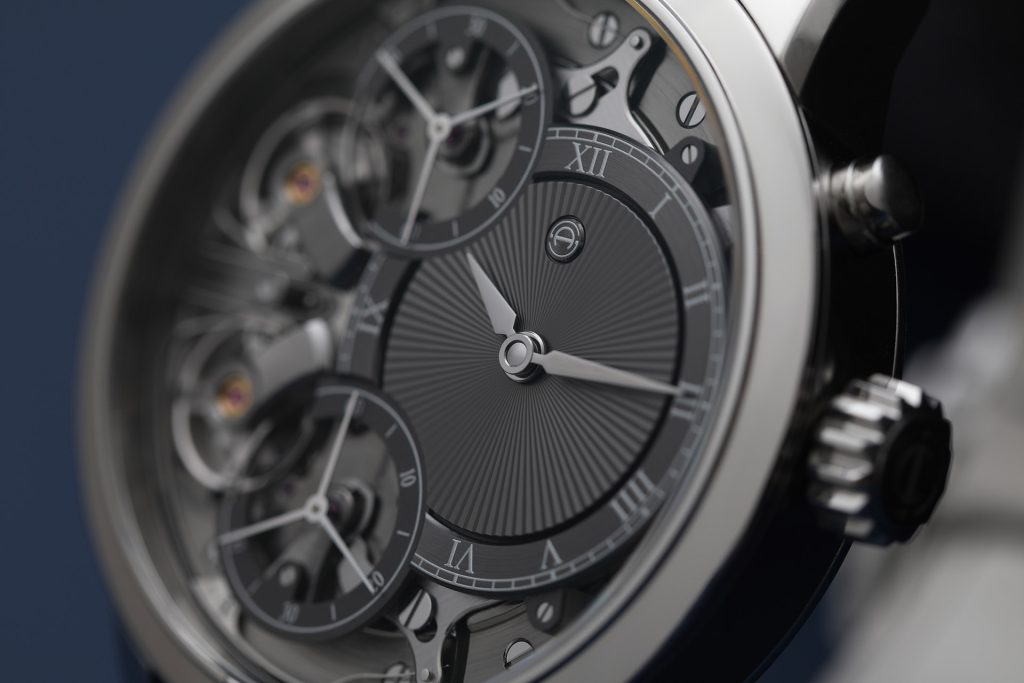
The dial designed by Kari Voutilainen
The energy generated by the two synchronically turning balances eventually discharges in the two synchronically turning seconds indications – however, they turn in opposite directions. Armin Strom therefore placed the digits of the one seconds indications so that it ran backwards. As a result, there appear to be two different things happening on the dial, however they actually share the identical function.
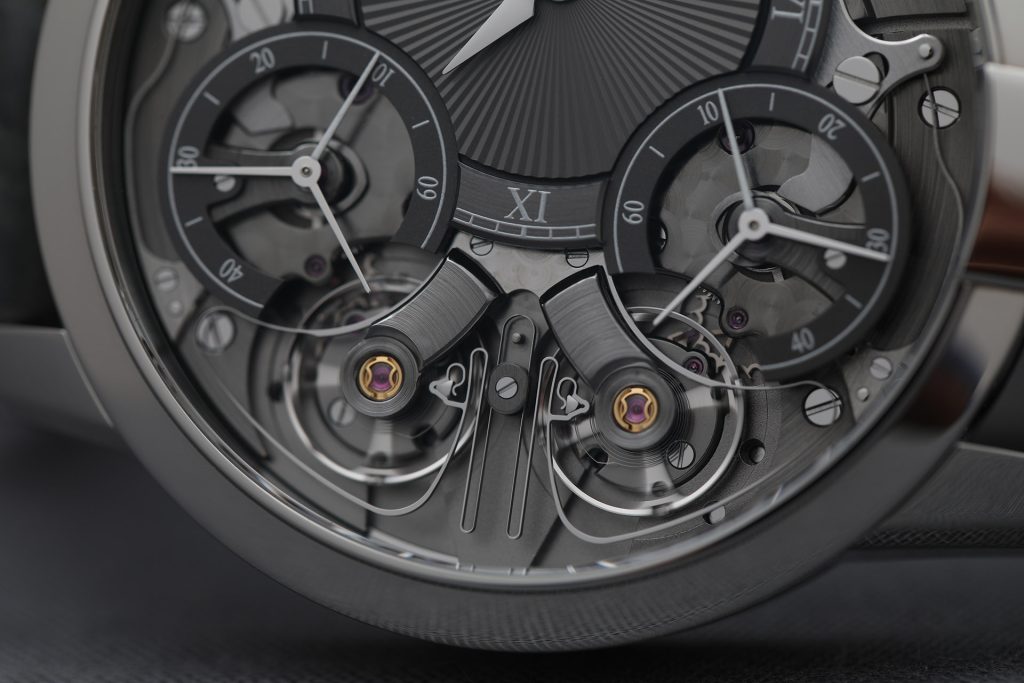
The two seconds indications can be set back at zero via the pusher at 2 o’clock. When looking at the two indications, it’s almost as though one seconds indication takes you back in the past, while the other pushes you into the future.
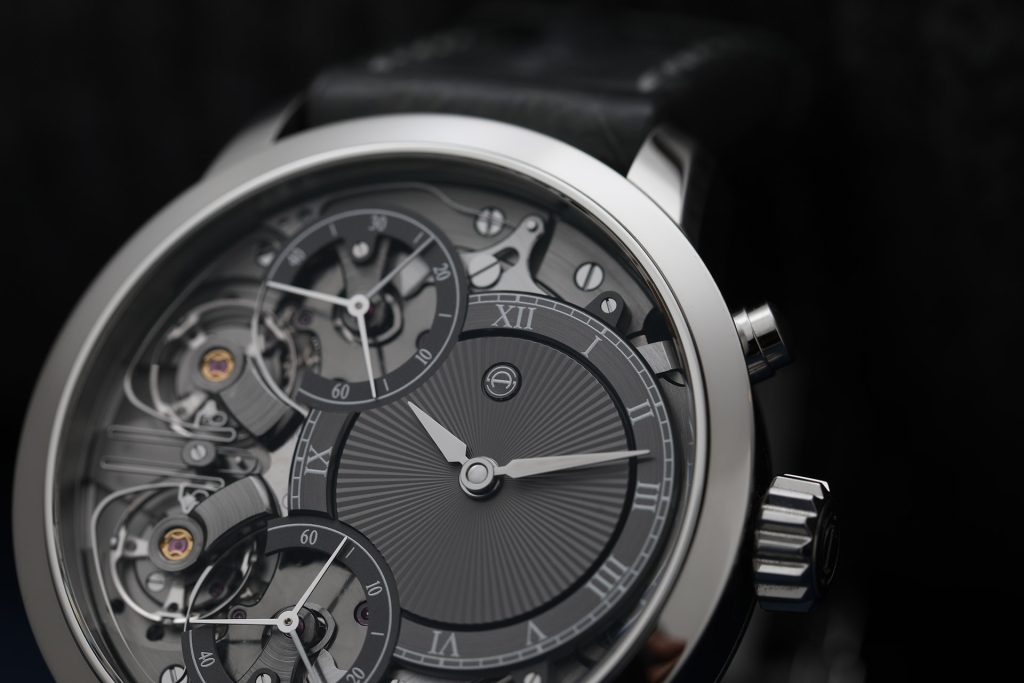
The pusher at 2 o’clock sets the seconds indications back at zero

